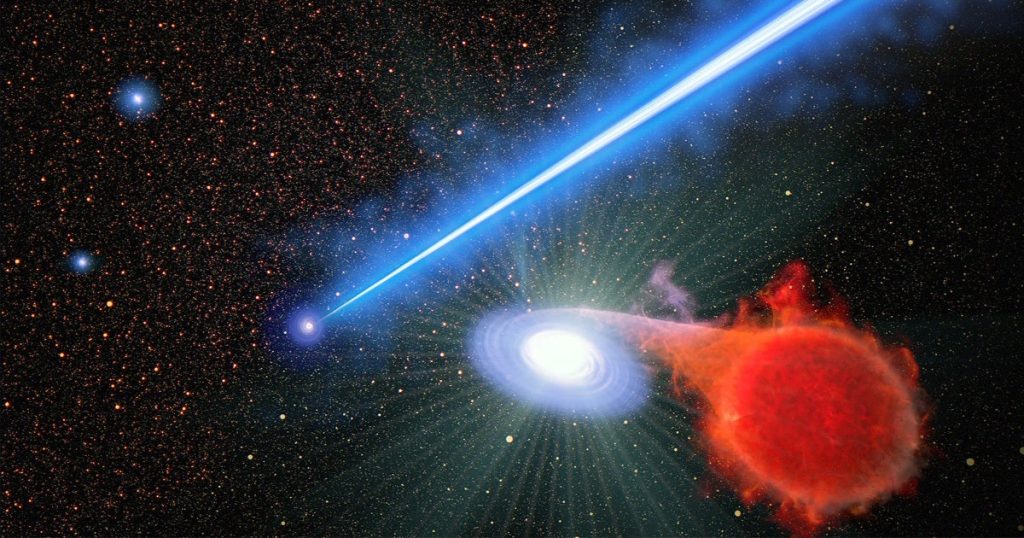
Scientists Say Furious Black Hole Making Nearby Stars Explode (Image Credit: futurism-com)
Jet Set Radio
Black holes are some of the most destructive objects in the universe — but it’s not just their terrifying gravity you should fear.
Brooding at the heart of the galaxy M87, astronomers using the Hubble Space Telescope have imaged a supermassive black hole that’s shooting out a veritable death beam of energy so intense, it’s causing stars along its path to explode.
This “jet,” as it’s known, is formed by plasma ejected from the black hole, which is 6.5 billion times the mass of our Sun, at nearly the speed of light. The sheer energy the jet emanates is so overwhelming that, along its 3,000 light year length, simply being near it appears to trigger epic eruptions called novas in binary star systems. The mechanisms behind this, however, have puzzled researchers.
These findings, published as a study in The Astrophysical Journal, raise fundamental questions about the nature of black hole jets, as well as the frequency of novas.
“We don’t know what’s going on, but it’s just a very exciting finding,” study lead author Alec Lessing of Stanford University said in a NASA statement. “This means there’s something missing from our understanding of how black hole jets interact with their surroundings.”
Feeling the Force!@NASAHubble captured this image of a 3,000-light-year-long jet of plasma blasting from a 6.5-billion-solar-mass central black hole. The blowtorch-like jet seems to cause stars to erupt along its trajectory.
READ MORE >> https://t.co/IuhHmbCMRD pic.twitter.com/tCJjn4KCVe
— NASA Marshall (@NASA_Marshall) September 28, 2024
Terrible Twosome
Typically, a nova is a sustained cycle of eruptions in a binary system that contains an ordinary star near the end of its life — such as a red giant — and a smaller one called a white dwarf.
The dense remnants of what was once a larger star, white dwarfs contain a lot of mass for their size. As the dying, ordinary companion star bloats and expands outward, some of its mass falls into the grip of the white dwarf’s intense gravity and gets sucked across.
When enough of this material accumulates on the surface of the white dwarf, it detonates in a nuclear explosion. This doesn’t destroy it, however — instead, the process repeats itself, until another eruption occurs, again and again.
What the researchers discovered is that this appears to be accelerated by the black hole jet, finding that there were twice as many novas erupting along its path than anywhere else in the galaxy. And that’s saying something: the current understanding is that a nova erupts every day in M87. (If you want to feel insignificant, around one million erupt per second throughout the observable universe.)
Hydro Power
Why the black hole jet triggers novas is unknown, but the researchers do have a few hunches.
“There’s something that the jet is doing to the star systems that wander into the surrounding neighborhood. Maybe the jet somehow snowplows hydrogen fuel onto the white dwarfs, causing them to erupt more frequently,” Lessing said. “But it’s not clear that it’s a physical pushing. It could be the effect of the pressure of the light emanating from the jet.”
“When you deliver hydrogen faster, you get eruptions faster,” Lessing added. “Something might be doubling the mass transfer rate onto the white dwarfs near the jet.”
The jet could also be heating up the bloated ordinary stars in the stellar pairings, causing them to spill more material onto the white dwarf. Definitive answers, though, will probably elude us until we get more observations.





